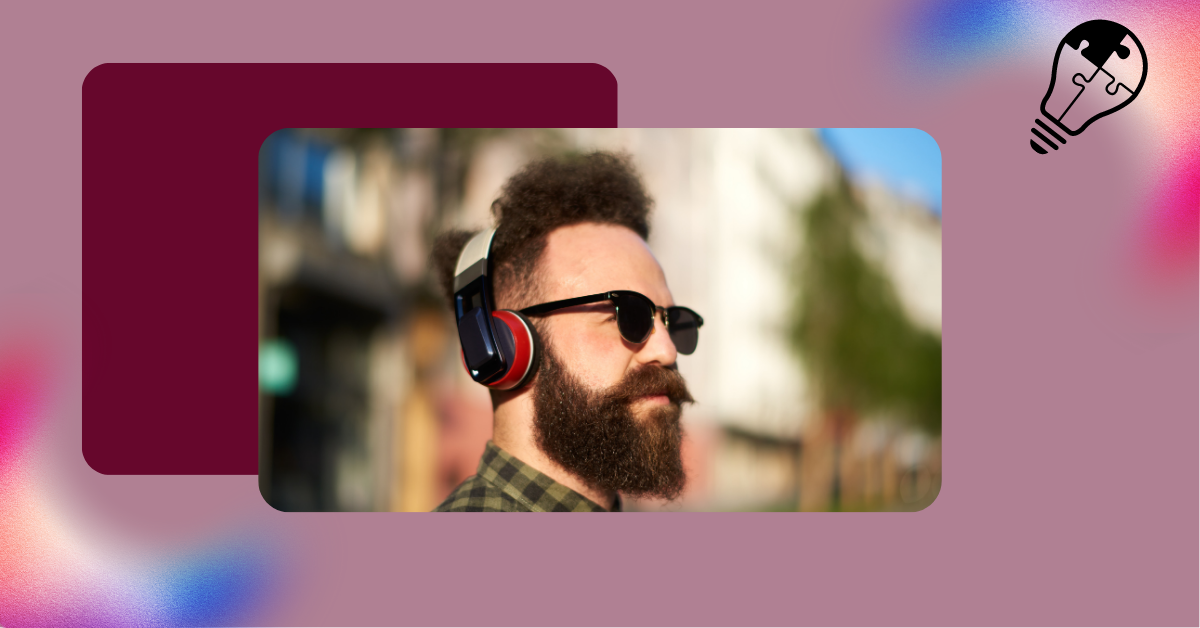Social Media Listening Blog
It’s no secret that social media has had a colossal impact on the world. It influences everything from interpersonal relationships to global politics and encompasses everything from posting pictures of your breakfast sandwich to instantaneously receiving breaking news straight from the POTUS’ himself. While some brands were hesitant at first to jump on the bandwagon, it’s clear now that properly utilizing social media is crucial to any business’ success.
Since Twitter was launched fourteen years ago, most companies have figured out how to post, hashtag, and update, but there’s another important aspect to engagement many have yet to discover. What is this elusive skill continuing to evade even the most tech savvy of corporations, you ask?
Listening.
Social media listening, to be more specific. Without this final piece of the puzzle, social media engagement falls flat. Imagine your social media account as a woman (or man) with a megaphone. Every post you make is shouted through that megaphone out into the world. A group of people have gathered around (your followers), and they seem to be listening when you shout through your megaphone. However, you start to notice they also talk amongst themselves. Don’t you want to know what they’re saying? They may seem like they’re enjoying your content, but without hearing their feedback how can you be sure? This is where listening comes in.
So, what is social media listening?
Tony Tran defines social media listening as “the process of monitoring social media channels for mentions of your brand, competitors, product and more”.
Let’s look at an example from Twitter. The fast food chain Wendy’s is extremely active on Twitter with 3.7m followers, and in 2017, the brand went viral after engaging with competitors on social media.
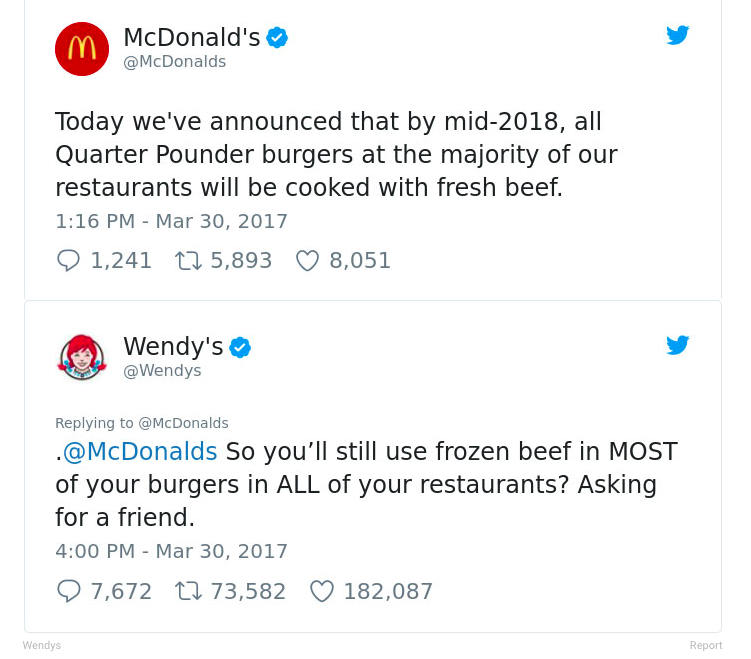
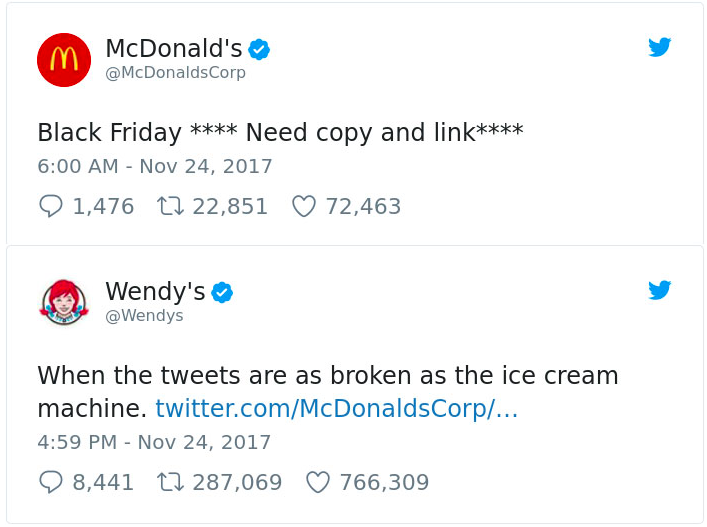
Wendy’s even went a step further from engaging directly with their competition to engaging with their competitor’s customers.
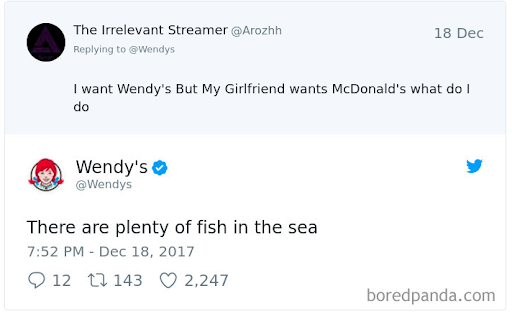
While the role of the sassy redhead isn’t appropriate for every brand, we can learn a thing or two about social media listening from Wendy’s. Had Wendy’s not been monitoring their own mentions as well as their competitors’, they would have missed out on these vital opportunities to engage.
Listen, then act.
Let’s say you are like Wendy’s and you do actively monitor your own mentions as well as those of your competitors: what are you doing with the information you’re gathering? If you aren’t turning the data into subsequent action, you may as well not bother gathering it. Once you have a better understanding of how your brand and product are being perceived by the public, you can take steps to improve or maintain this image. Showing that you’ve heard your customers or audience and are actively taking steps to improve based on their feedback is vital for continued success.
A great example of this is the brand Nike. Nike is extremely active on social media, but unlike Wendy’s, their engagement is often providing customer service. They have a separate account, previously @TeamNike and now @NikeService, used solely for answering customer questions.
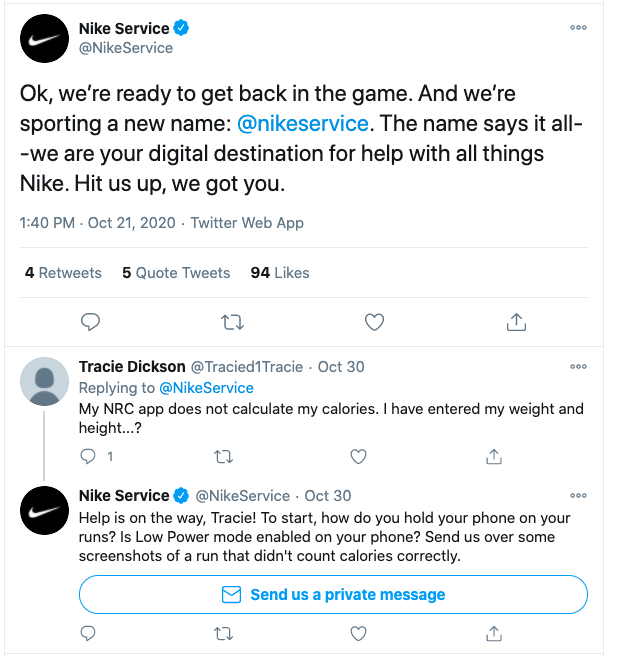
While you may not have the team or the need to directly run a customer service Twitter account, engaging with customers directly like this on social media will allow you to better understand issues your audience may be having. It can provide valuable insights into things that may need to be addressed, areas where better explanation can be offered on the website, and even common questions that can be compiled into an FAQ.
Actively listening on social media and showing that you’re actively listening will create a more positive experience for your audience. Your customers will feel heard and valued, and they’ll be more likely to remain loyal to you.
Identify problems, but also find your fans.
Social media listening can also help you identify possible influencers or advocates who regularly engage with your product or message. Social media influencers are a fairly new concept, but they’ve already made a huge impact. Instagram and Youtube are hot spots for influencers who regularly spotlight products, organizations, and events. Finding the right person to represent your brand or company could open a door to a new audience previously unreached.
Social media provides a new, more direct line of contact between companies and consumers. Never before have organizations been given such insight into the minds of their customers, but so much of it is wasted because of a lack of social media listening. Properly implementing social media listening into your online strategy can be the difference between remaining relevant and fading into the background.

